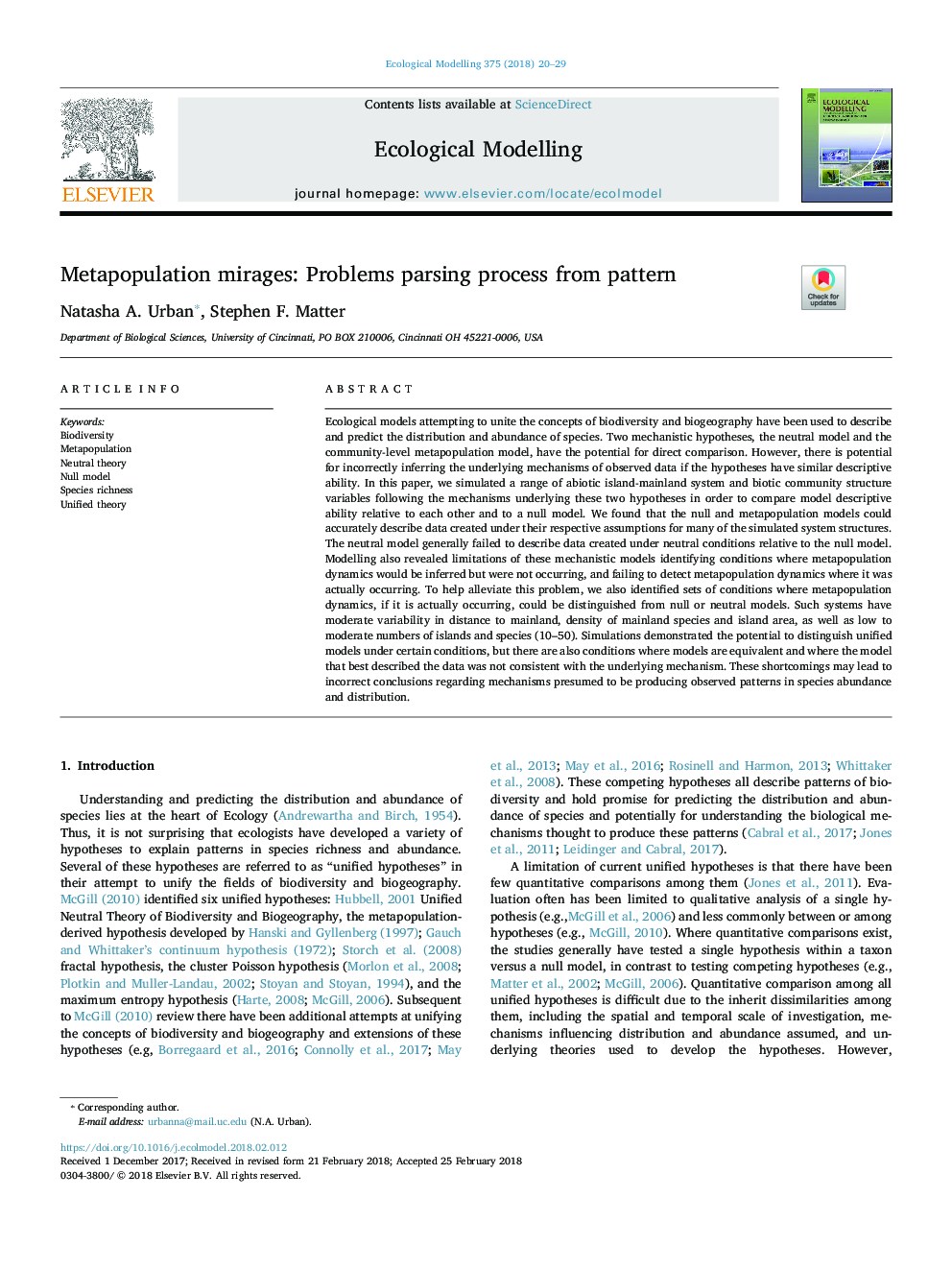| Article ID | Journal | Published Year | Pages | File Type |
|---|---|---|---|---|
| 8846070 | Ecological Modelling | 2018 | 10 Pages |
Abstract
Ecological models attempting to unite the concepts of biodiversity and biogeography have been used to describe and predict the distribution and abundance of species. Two mechanistic hypotheses, the neutral model and the community-level metapopulation model, have the potential for direct comparison. However, there is potential for incorrectly inferring the underlying mechanisms of observed data if the hypotheses have similar descriptive ability. In this paper, we simulated a range of abiotic island-mainland system and biotic community structure variables following the mechanisms underlying these two hypotheses in order to compare model descriptive ability relative to each other and to a null model. We found that the null and metapopulation models could accurately describe data created under their respective assumptions for many of the simulated system structures. The neutral model generally failed to describe data created under neutral conditions relative to the null model. Modelling also revealed limitations of these mechanistic models identifying conditions where metapopulation dynamics would be inferred but were not occurring, and failing to detect metapopulation dynamics where it was actually occurring. To help alleviate this problem, we also identified sets of conditions where metapopulation dynamics, if it is actually occurring, could be distinguished from null or neutral models. Such systems have moderate variability in distance to mainland, density of mainland species and island area, as well as low to moderate numbers of islands and species (10-50). Simulations demonstrated the potential to distinguish unified models under certain conditions, but there are also conditions where models are equivalent and where the model that best described the data was not consistent with the underlying mechanism. These shortcomings may lead to incorrect conclusions regarding mechanisms presumed to be producing observed patterns in species abundance and distribution.
Related Topics
Life Sciences
Agricultural and Biological Sciences
Ecology, Evolution, Behavior and Systematics
Authors
Natasha A. Urban, Stephen F. Matter,
